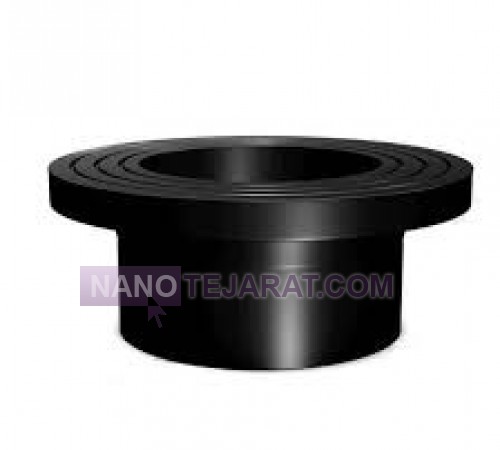


| Exporter, Wholesale, Manufacturer | |
| Tehran | |
| +989122003350 | |
| sayalsanat@gmail.com | |
Polyethylene butt fusion flanges are manufactured from high-density polyethylene HDPE – PE100 and are typically produced in pressure ratings of PN10 and PN16. These fittings are available in nominal diameters ranging from 63 mm to 800 mm and comply with international standards such as ISO 4427 and DIN 16963. Their operating temperature ranges from 0 to 60 degrees Celsius, and when UV-stabilized materials are used, their resistance to sunlight exposure is significantly enhanced. The weight of each flange varies based on nominal size and pressure class, typically ranging from 0.4 to 12 kilograms.
The connection process involves butt fusion welding, which provides a fully secure, leak-proof, and permanent joint between the flange and the polyethylene pipe. The weld length is generally considered to be 1.5 to 2 times the pipe diameter to ensure mechanical stability. The wall thickness of the flange is designed according to the PN rating and can reach up to 45 millimeters for PN16 pressure class. These flanges are ideal for pressurized systems, corrosive fluid transport, industrial wastewater, and potable water applications.You can order and buy HDPE Butt Fusion Flange from Iran by contacting us through whatsaap and email.
WEBSITE: HDPE Butt Fusion Flange Iran

Butt fusion polyethylene flanges are manufactured in a variety of models and sizes to meet different requirements in fluid transfer projects. These flanges are classified based on pressure rating, type of metal backing ring, body thickness, and final application. The most common types include plain butt fusion flanges, flanges with steel backing rings rotating metal flanges, HDPE stub-end flanges, and reinforced flanges for high-pressure conditions. Each type is designed for specific environments such as high temperatures, corrosive fluids, or heavy pressure loads.
Choosing the right type of polyethylene butt fusion flange depends on factors such as pressure class PN, nominal pipe diameter ND, fluid type, and environmental conditions. A proper understanding of these flange types and their characteristics plays a key role in preventing leakage, extending the service life of piping systems, and optimizing overall project costs.